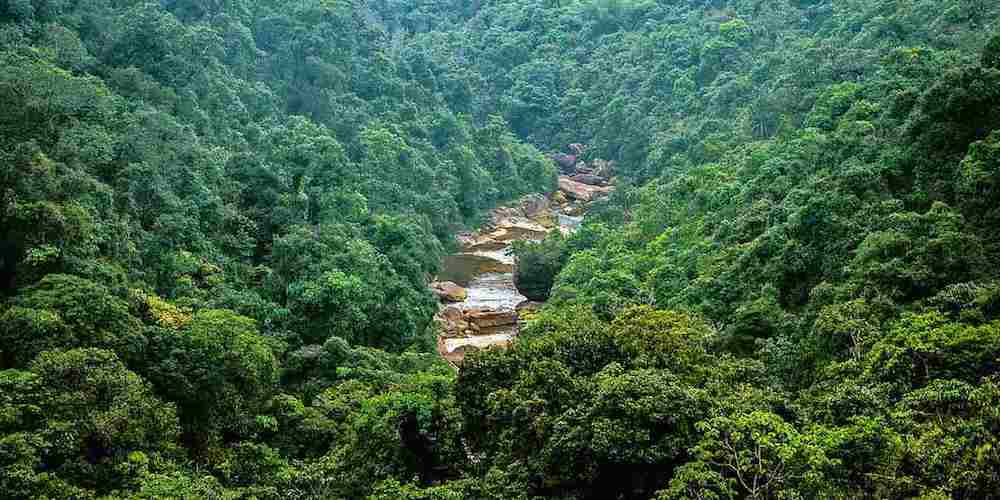The Need To Increase Forest Cover

The Indian government has recently released its latest national forest cover report which claims a marginal increase in the country’s total forest and tree cover. Though the report has found an increase in the forest-cover in the country over the last one year, it nonetheless warns that in less than 10 years, 45-64 percent of India’s forest cover will be covered under climate change hotspots and by 2050 it will extend to the entire Indian forest cover.
Forest Survey of India (FSI), Dehradun, an organization under the Union Ministry of Environment, Forest and Climate Change carries out the assessment of forest cover of the country biennially and the findings are published in India State of Forest Report (ISFR). This assessment gives the requisite data on change of forest cover in the country.
As per ISFR2021, the total forest cover of the country is 7,13,789 sq. km. which is 21.71% of the geographical area of the country. The forest cover of the country has increased by 1540 sq. km. as compared to the last assessment i.e., ISFR 2019. Further, the overall increase in forest cover in the last one decade is 21,762 sq. km.
According to the report, the top five states in terms of increase in forest cover are Andhra Pradesh (647 sq. km.), Telangana (632 sq. km.), Odisha (537 sq. km.), Karnataka (155 sq. km.) and Jharkhand (110 sq. km.), while the top five states showing a major loss in forest cover are the five northeastern states – Arunachal Pradesh (257 sq. km.), Manipur (249 sq. km.), Nagaland (235 sq. km.), Mizoram (186 sq. km.) and Meghalaya (73 sq. km.). It also highlighted a decrease of 902 sq. km. in 140 hill districts of the country.
It may be noted that some experts find problems in the definition of forest areas made in the report. They question the report including “plantations on the private and community lands, road, rail and canal side plantations, rubber, tea and coffee plantations etc. are included in assessment of forest cover.”
Climate Change is expected to impact the diverse ecosystems of the country in different ways. As per India’s Third Biennial Update Report (2021) submitted to the United Nations Framework Convention on Climate Change, the studies on forests and biodiversity indicate that many natural ecosystems in the country are vulnerable to ongoing and future climate change.
The studies also show that Indian forests still retain considerable potential for carbon sequestration. The dominant forest type in the country, namely the tropical dry forest, has considerable resilience to store carbon and maintain diversity in the face of climate related disturbances such as drought and fire as per studies in the Western Ghats, though changes in tree species composition are expected to occur.
The studies have also brought out the vulnerability of the natural grasslands of the country to climate change with the risk of invasion by alien and native woody plants. There are already indications that both herbaceous and woody plants are moving to higher elevations in mountain regions such as the Himalaya.
What is heartening, however, is that various schemes are being implemented by the Central and State Governments/Union Territory Administration for increase in forest and tree cover in the country. These include, the National Afforestation Programme (NAP) and Green India Mission (GIM) being implemented by the Ministry of Environment, Forest, and Climate Change.
According to the Union Minister of State for Environment, Forest & Climate Change, Shri Ashwini Kumar Choubey, National Afforestation Programme is a Centrally Sponsored Scheme for regeneration of degraded forest and adjoining areas in the country. The scheme has been implemented through a three-tier institutional setup of State Forest Development Agency (SFDA) at State level, Forest Development agency (FDA) at Forest Division level and Joint Forest Management Committees (JFMCs) at Village level. Green India Mission is one of the eight Missions outlined under the National Action Plan on Climate Change. It aims at protecting, restoring, and enhancing India’s forest cover and responding to climate change by means of plantation activities in the forest and non-forest areas.
Afforestation activities are also taken up under various programmes/funding sources such as Compensatory Afforestation Funds under Compensatory Afforestation Fund Management and Planning Authority (CAMPA), afforestation activities under Mahatma Gandhi National Rural Employment Guarantee Scheme (MGNREGA), National Agroforestry Policy and Sub-mission on Agro-forestry (SMAF), National Bamboo Mission and National Mission for Sustainable Agriculture.
In addition to above, State and UT Governments have their own afforestation and reforestation programmes. Almost every State has activities under social forestry, which largely focuses on tree planting in the areas outside forests.



